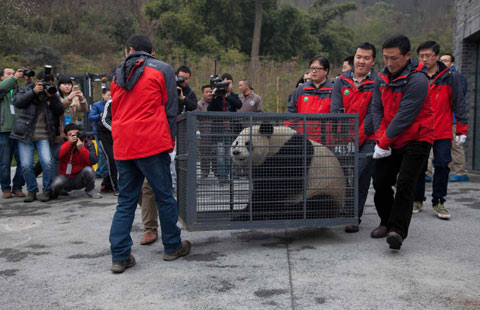Official vows better conditions for cultural relics
Updated: 2014-02-25 08:23
By Han Bingbin (China Daily)
|
||||||||
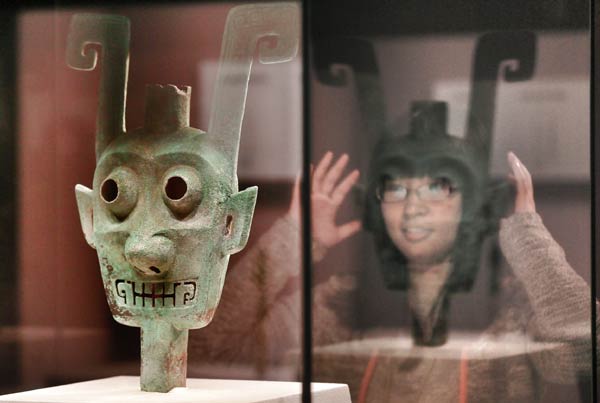 |
|
A bronze mask is shown during an exhibition for Jiangxi cultural relics at the Capital Museum in Beijing on Monday. China has made great efforts and will invest more in cultural relic preservation. [Chai Cheng/For China Daily] |
China will step up its preservation of cultural relics despite challenges ahead such as the shortage of talents and technology, an official with the country's top cultural agency said on Monday.
A 2005 investigation by the State Administration of Cultural Heritage found that more than 50 percent of museum-stored cultural relics show corrosion.
Around 2.3 million pieces are considered to be severely corroded, Li Xiaojie, deputy minister of culture and director of the administration, said at a news conference on Monday.
Between 2006 and 2010, the central government invested 250 million yuan ($41.2 million) into improving museum storage conditions. Li said environmental factors, such as proper temperature, humidity and lighting, are essential in protecting cultural relics.
"The purpose is to prevent new damages. We don't have to repair all corroded cultural relics," Li said. "Cultural relics can't avoid corrosion. Our goal is to help them live with a disease."
But repairs will still be made to the 2.3 million severely corroded relics. Between 2006 and 2010, the central government invested 600 million yuan into such repair projects.
Li said the current Five-Year Plan (2011-15) will see an even larger investment, with 817 million yuan already invested between 2011 and 2013 into repairing severely corroded relics.
But Li said repair efforts have met with bottleneck restrictions, such as the shortage of experienced artisans, lack of proper technologies and a heavy workload made even more challenging by a long work cycle.
To tackle such problems, the top cultural agency has been working with cultural management departments in countries like Italy to jointly host training sessions, in a bid to foster China's younger generation of artisans.
Chinese museums have been dedicating their efforts to technology exploration. For example, the Palace Museum in Beijing is building the country's largest cultural relic restoration and research center at more than 40,000 square meters.
Meanwhile, the Palace Museum is hiring veteran artisans from across the country to participate in current repair projects. They are also expected to pass down their time-honored craftsmanship to younger artisans.
"The corrosion could cause a loss of hundreds of millions of yuan a year. It's not a problem that can be solved by only throwing money at it. We need to take responsibility for the cultural relics," said Shan Jixiang, director of the museum.
The protection of cultural heritage will continue to be a key emphasis of work in 2014, Minister of Culture Cai Wu said on Monday. The Ministry of Culture recently launched the first nationwide census on State-owned movable cultural heritage, and the State Council announced the seventh list of State-protected historical and cultural sites.
Besides preservation, the safety of cultural relics is a major concern, according to the administration.
Following a few nationwide incidents in previous years in which cultural relics were damaged or destroyed by fires, the State Administration of Cultural Heritage has announced it is ready to work with the Ministry of Public Security on a series of measures for fire prevention.
The administration has also signed governmental agreements with counterparts in Nigeria, Switzerland and Cyprus to fight cultural relic smuggling.
Sun Yuanqing contributed to this story.
hanbingbin@chinadaily.com.cn

 Second Madoff aide testifies
Second Madoff aide testifies
 Odierno visits Beijing
Odierno visits Beijing
 Sochi closes Olympics, clearing shadows of doubt
Sochi closes Olympics, clearing shadows of doubt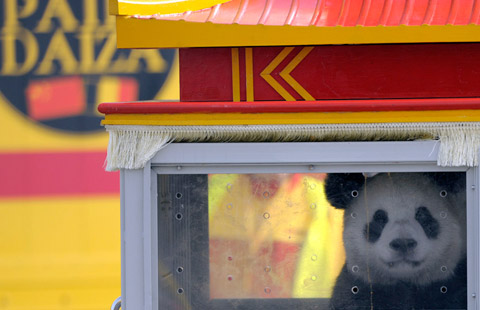
 China's giant pandas arrive at Belgian zoo
China's giant pandas arrive at Belgian zoo
 Ukrainian parliament dismisses president
Ukrainian parliament dismisses president
 Beijing upgrades haze alert from yellow to orange
Beijing upgrades haze alert from yellow to orange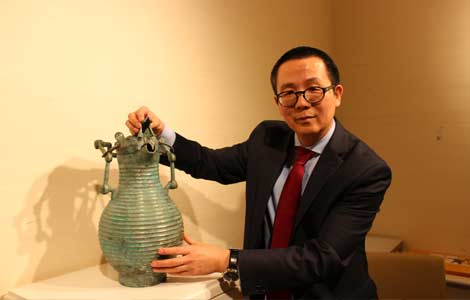
 Rare Zhou bronze wine vessel goes on the block
Rare Zhou bronze wine vessel goes on the block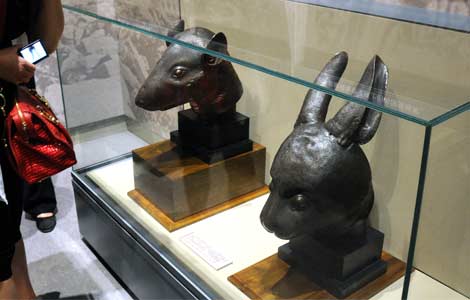
 Reclaiming a heritage lost, stolen or sold
Reclaiming a heritage lost, stolen or sold
Most Viewed
Editor's Picks

|

|

|

|

|

|
Today's Top News
Pentagon plans to cut army to pre-WWII level
US stands ready to give Ukraine financial aid
Consumer economy isn't happening: economist
Chinese acrobats meet Ringling Bros
Boston symphony on tour
Ukraine's new govt needs to seek balance: experts
CNN ends Piers Morgan's show
Hospitals aim to prescribe more security
US Weekly

|

|


